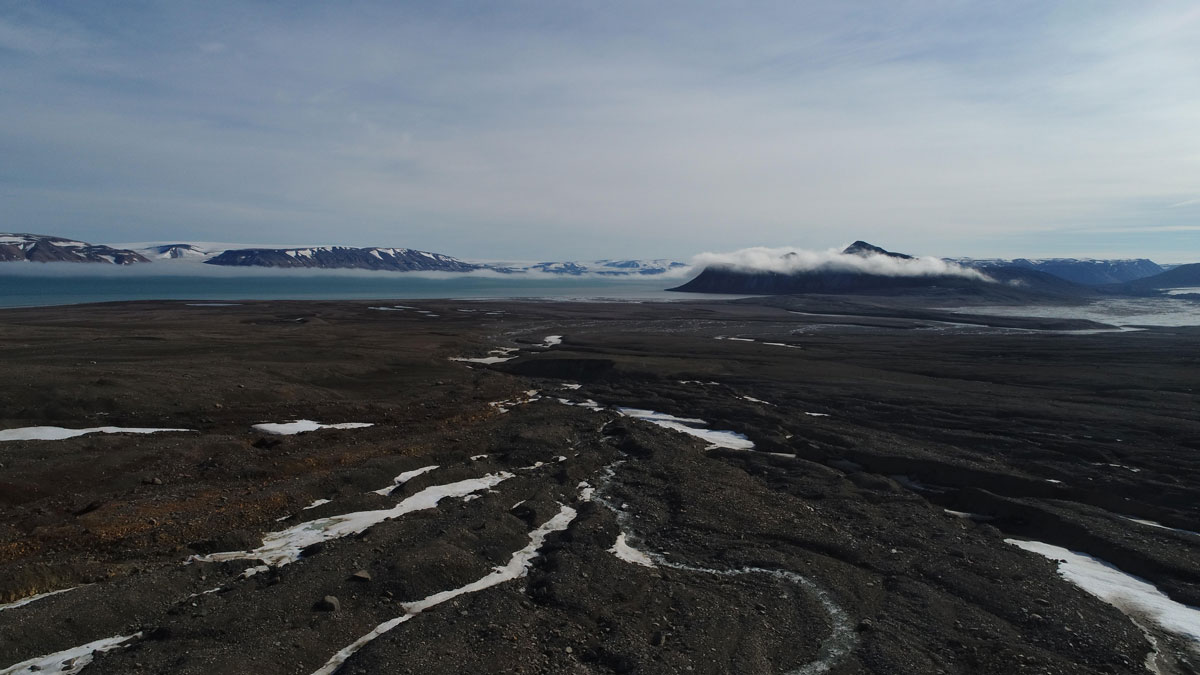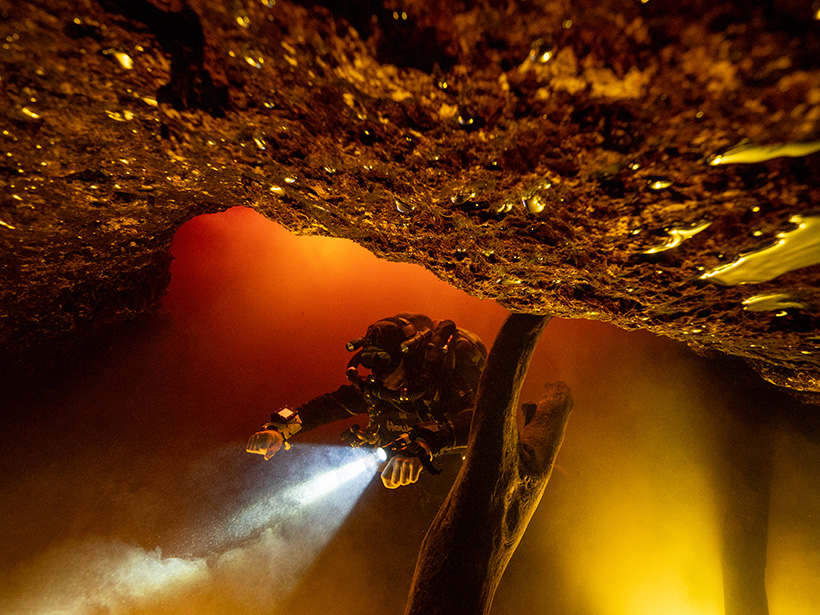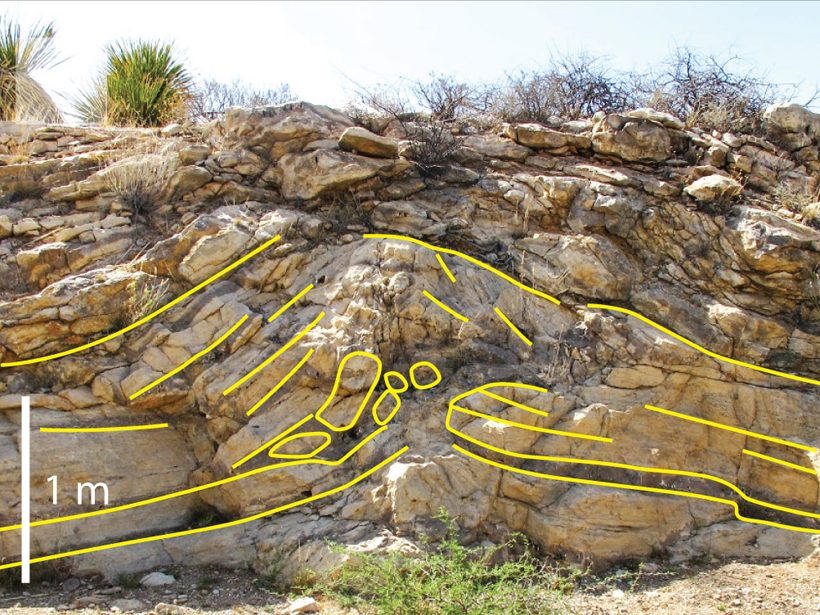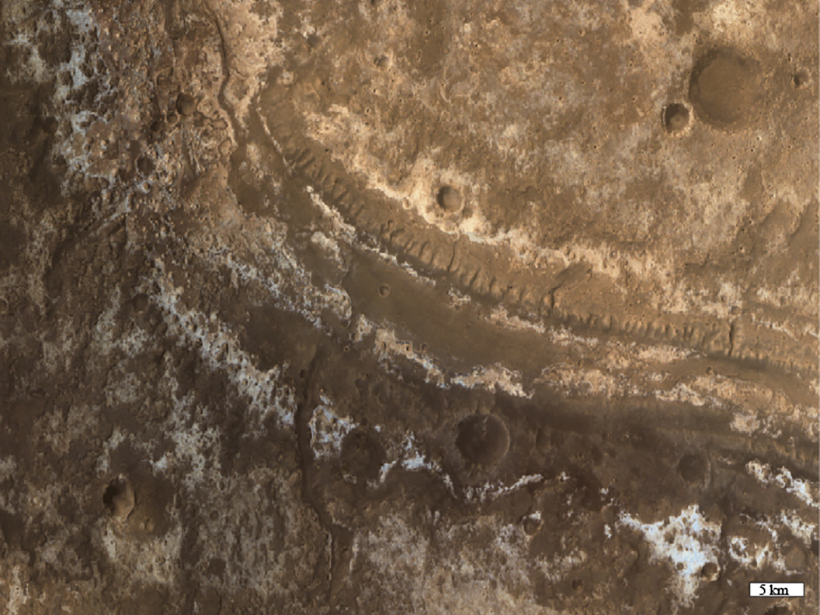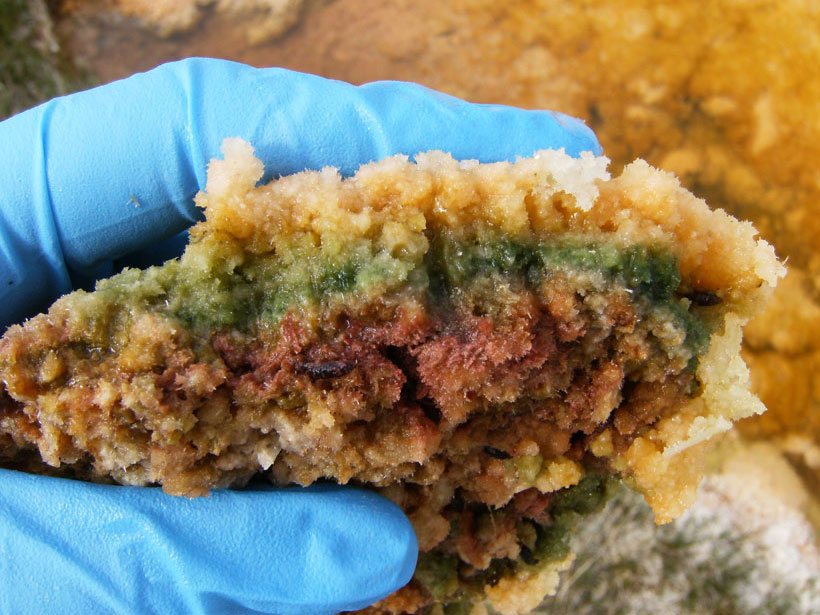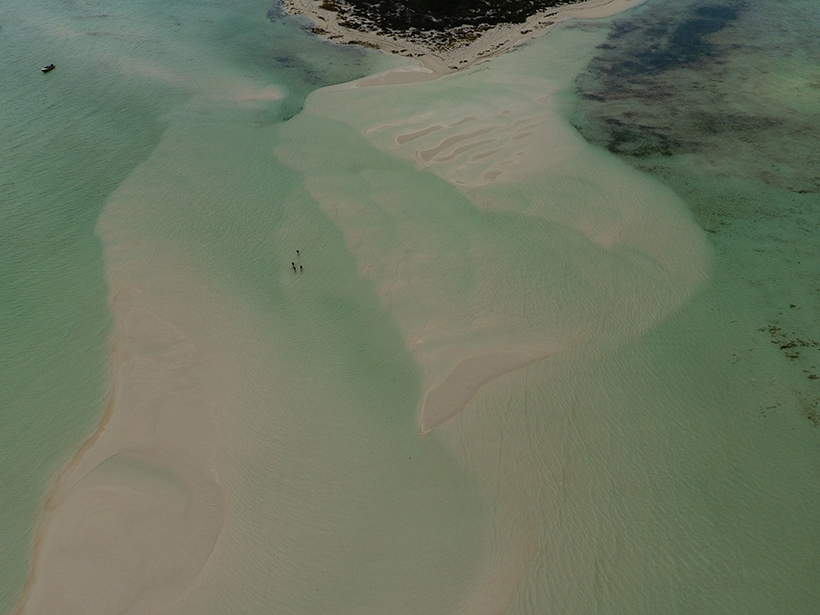Geochronologists are finding fresh approaches to familiar methodologies, especially by zapping rocks with lasers to tackle classic Precambrian problems.
carbonates
A New Focus on the Neglected Carbonate Critical Zone
Studies of Earth’s critical zone have largely focused on areas underlain by silicate bedrock, leaving gaps in our understanding of widespread and vital carbonate-dominated landscapes.
Sedimentary Tepees Record Ocean Chemistry
Sedimentary structures from evaporative coastal environments indicate carbonate saturation, offer insight in mid-Mesozoic ocean chemistry and potentially even earlier times.
Carbonate Standards Ensure Better Paleothermometers
A community effort finds that carbonate standards eliminate the interlaboratory differences plaguing carbonate clumped-isotope thermometry studies.
The Alkalinity Trap at the Bottom of the World
Tiny microorganisms in the Southern Ocean affect the way the rest of the world’s seas respond to carbon dioxide.
Autonomous Minisubmarine Measures Seawater Conditions
Forecasts of carbonate chemistry in coastal ecosystems determined from seasonal robotic measurements can improve fisheries management and help mitigate short-term ocean acidification events.
“Glass Pearls” in Clamshells Point to Ancient Meteor Impact
Research suggests that the spherical structures, smaller than grains of sand, may be microtektites, but additional investigations are needed to verify their identity.
Detecting Carbonates on the Surface of Mars
A new study shows how a warm, wet climate weathered rocks on early Mars.
The Carbon Market Potential of Asbestos Mine Waste
Researchers have devised new methods to turn toxic asbestos mine tailings into innocuous piles of carbonate rock and draw down atmospheric carbon dioxide at the same time.
Old Idea Spurs New Research into Origins of Carbonate Mudstones
Using modern techniques, scientists tested an old hypothesis about carbonate mud production to shift the thinking about rocks that are used as seawater archives and a source of petroleum.

